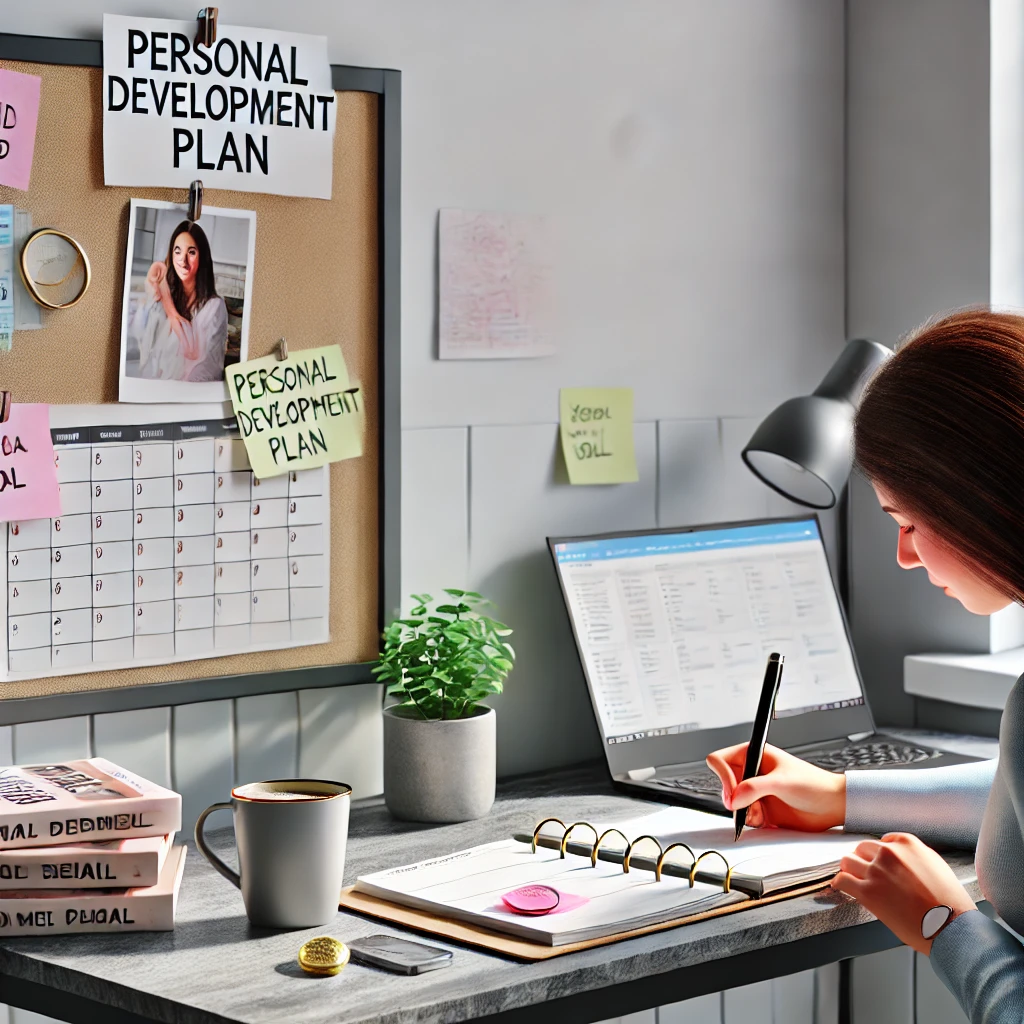
Creating a personal development plan (PDP) is an essential step towards achieving your goals and enhancing your skills. A well-structured PDP helps you identify your aspirations, set clear objectives, and track your progress. Here’s a step-by-step guide to creating an effective personal development plan.
1. Self-Assessment
Identify Strengths and Weaknesses
- Reflect on Skills: List your current skills and abilities, noting areas where you excel.
- Recognize Areas for Improvement: Identify skills or knowledge gaps that you wish to address.
Assess Values and Interests
- Define Your Values: Consider what is important to you in life (e.g., career success, family, health).
- Explore Interests: Identify activities and subjects that you are passionate about and enjoy.
2. Set Clear Goals
Use the SMART Framework
- Specific: Clearly define what you want to achieve.
- Measurable: Establish criteria to measure your progress.
- Achievable: Ensure your goals are realistic and attainable.
- Relevant: Align your goals with your values and long-term objectives.
- Time-bound: Set deadlines for achieving your goals.
Example of SMART Goals
- Specific: “I want to improve my public speaking skills.”
- Measurable: “I will attend three public speaking workshops.”
- Achievable: “I will practice speaking in front of friends.”
- Relevant: “This will help me advance in my career.”
- Time-bound: “I aim to complete this within six months.”
3. Develop an Action Plan
Outline Steps to Achieve Your Goals
- Break Down Goals: Divide each goal into smaller, actionable steps.
- Set Priorities: Determine which actions are most critical and prioritize them.
Create a Timeline
- Establish Deadlines: Assign deadlines for each step to keep yourself accountable.
- Use a Calendar: Utilize a planner or digital calendar to track your tasks and deadlines.
4. Identify Resources and Support
Seek Learning Opportunities
- Courses and Workshops: Look for relevant courses, workshops, or online tutorials that can help you develop skills.
- Books and Articles: Read books and articles related to your goals for additional knowledge.
Build a Support Network
- Mentors and Coaches: Seek guidance from mentors or coaches who can provide insights and support.
- Accountability Partners: Share your goals with friends or colleagues who can help keep you accountable.
5. Monitor Progress
Regularly Review Your Plan
- Set Checkpoints: Schedule regular intervals (e.g., monthly or quarterly) to review your progress.
- Adjust as Needed: Be flexible and adjust your goals or action steps based on your progress and any new insights.
Celebrate Achievements
- Acknowledge Successes: Celebrate milestones, no matter how small, to maintain motivation.
- Reflect on Learning: Take time to reflect on what you’ve learned from your experiences.
6. Stay Committed and Motivated
Maintain a Positive Mindset
- Visualize Success: Regularly visualize achieving your goals to reinforce your commitment.
- Practice Self-Compassion: Be kind to yourself during setbacks and recognize that growth takes time.
Keep Learning
- Stay Curious: Embrace a growth mindset by continuously seeking new knowledge and experiences.
- Adapt to Changes: Be open to adjusting your plan as your interests and circumstances evolve.
Conclusion
Creating a personal development plan that works requires self-reflection, clear goal-setting, and consistent monitoring. By following these steps, you can develop a structured approach to personal growth that aligns with your values and aspirations. Stay committed, and remember that personal development is a lifelong journey!

